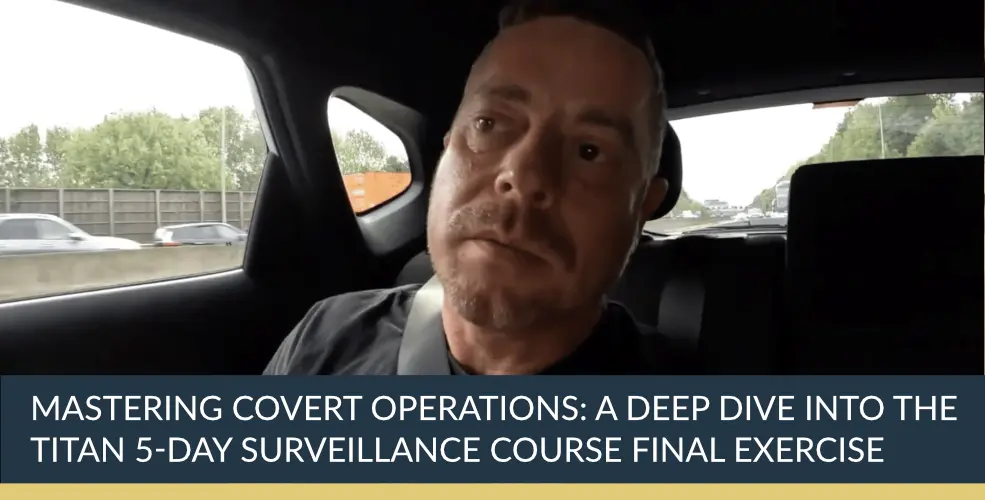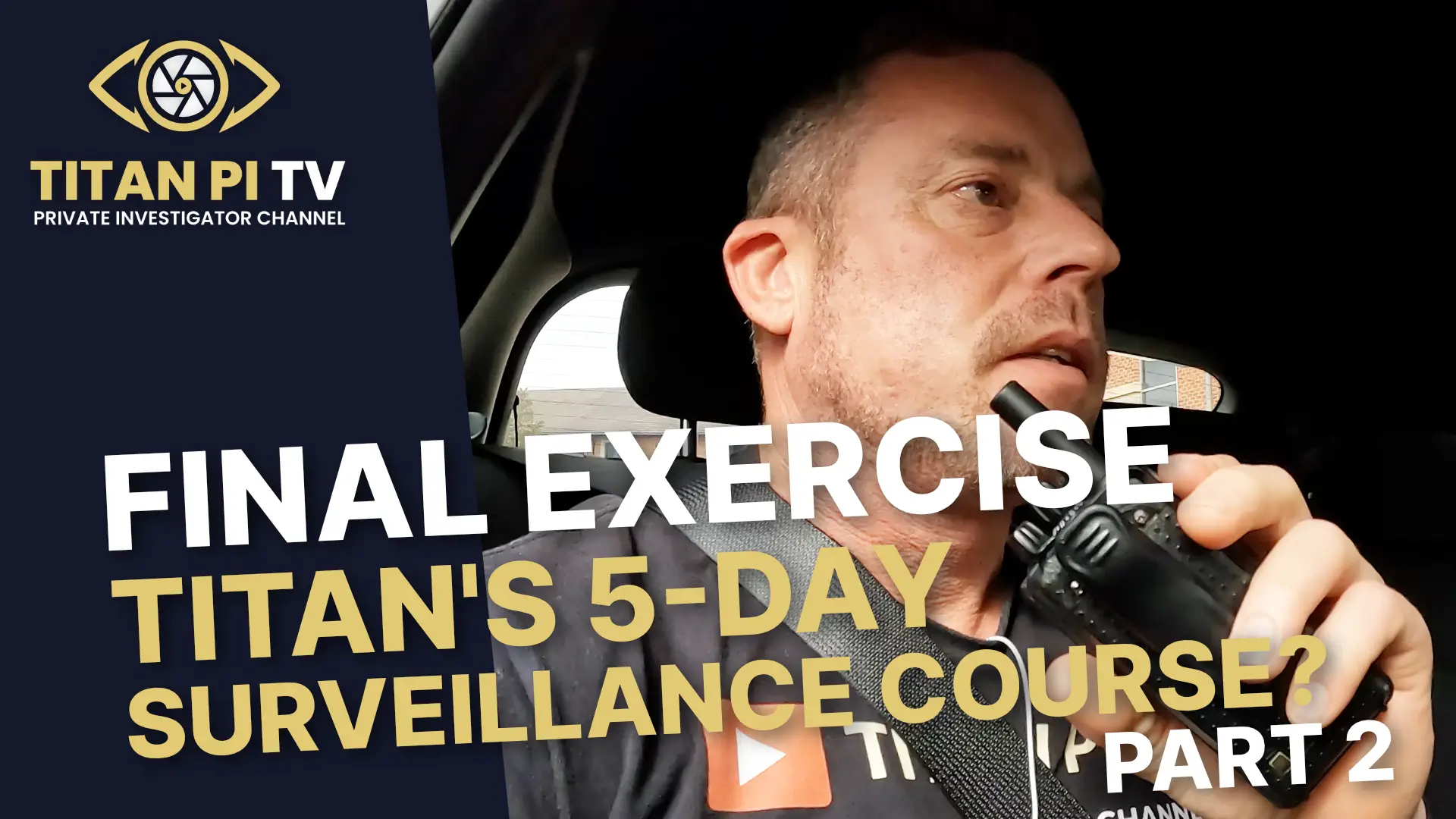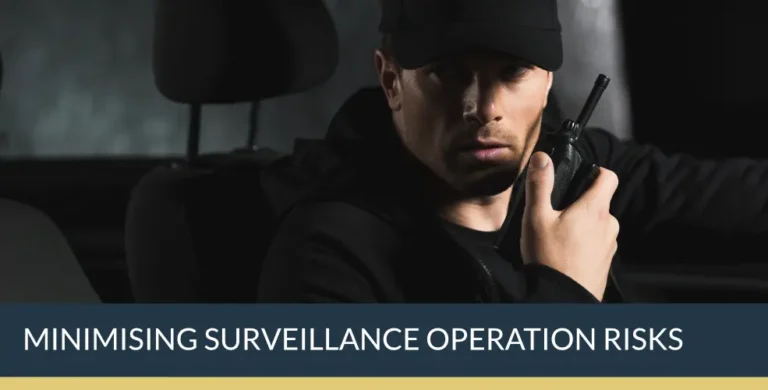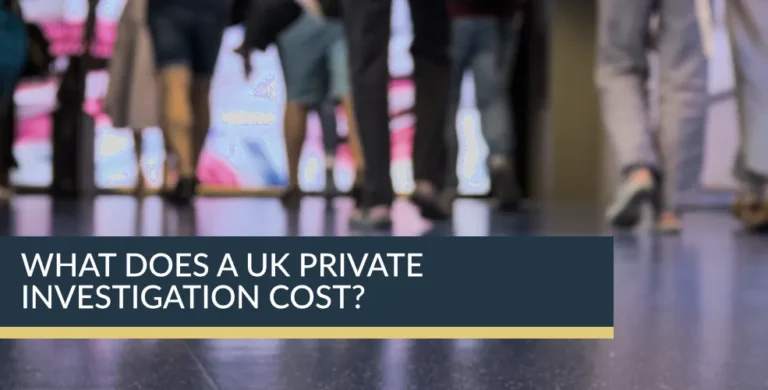Mastering Covert Operations: A Deep Dive into the Titan 5-Day Surveillance Course Final Exercise
Picture this: your team shadows a subject through busy streets, dodging crowds and sudden turns, all while remaining invisible. One wrong move and the entire operation could unravel. That is the thrill and tension of the final exercise in Titan Private Investigation Ltd’s intensive five-day surveillance course—an immersive assessment that pushes trainees to their limits in a realistic, high-pressure environment. It’s not merely a test of memory or rote procedure; it’s a dynamic, evolving scenario where decision-making, discipline, and discretion determine success. Trainees are challenged to manage real-world variables—hidden exits, unexpected meetings, public transport, shifting environments—and to demonstrate the ability to maintain continuous observation, make sound tactical choices on the fly, and protect the mission’s integrity.
This culminating exercise, designed and delivered by Titan’s seasoned instructors, replicates the operational tempo and ambiguity of genuine covert work. Trainees must demonstrate they can adapt, coordinate across foot and vehicle teams, deploy structured recovery when contact is lost, and collect actionable intelligence without compromising security or cover. It’s the difference between theoretical capability and professional readiness.
Below, we take a comprehensive look at the core components of this final exercise: the urban foot surveillance problem set, transitions to vehicular shadowing, a high-value hotel rendezvous, and the structured debrief that consolidates learning. Along the way, we explore the thinking behind the tactics, where trainees most often struggle, and what separates a pass from a near-miss.
Navigating Complex Urban Foot Surveillance Scenarios
Foot surveillance in a lively city setting is where many careers are made. On urban terrain, the environment is never static. Lighting shifts, pedestrian flows surge and thin, queues form, shopfronts reflect, and CCTV presence varies. Trainees must contend with all of this while keeping the subject under observation and preserving their own anonymity.
Titan’s exercise is engineered to demand controlled adaptability. Trainees are assessed not just on whether they keep eyes on, but how they do so—whether their spacing, body language, movement profiles, and positioning remain congruent with their chosen covers. The aim is to instil habits that survive contact with the chaos of the real world.
- Situational awareness: Knowing what’s behind you, to the side of you, above you on mezzanines, and reflected ahead of you is as important as what’s directly in front of your face.
- Role rotation: Teams should fluidly exchange lead, cover, and peripheral roles without broadcast or fuss. Over-exposure of one operative increases compromise risk.
- Patience under pressure: A sprint to regain position can be as conspicuous as losing the subject; the better response is often anticipatory positioning.
Handling Multi-Exit Venues: The Primark Challenge
The subject ducks into a Primark—familiar, two floors, multiple entrances and exits. He enters via one door and slips out another. It’s a simple test in appearance, but it probes a fundamental principle: never assume symmetry, and never take an entrance at face value. Titan’s trainees are coached to anticipate and pre-empt.
- Reconnaissance mindset: Even when a venue is “just a quick shop”, it can function as an escape valve. Trainees are expected to confirm exits, not guess them.
- Perimeter coverage: Teams deploy to near-side and far-side exits, balancing the need for visibility with the demand for cover discipline. They must look like shoppers, not sentries.
- Time discipline: The longer you hesitate to structure the perimeter, the greater the risk of losing the subject cleanly through an unobserved egress.
In the exercise, trainees identify the likely exit paths rapidly and position accordingly. The scenario reinforces the value of pre-brief venue familiarisation, but also the need to think like an adversary when full recon isn’t possible. It’s chess in a maze: you may not know the layout, but you can still control the board with sound positioning.
Overcoming Environmental Hurdles: The Arcade Test
Next, the subject enters a small arcade with three exits. It’s quieter, which paradoxically makes surveillance harder; loitering looks odd, clustering is suspicious, and background noise no longer conceals whispers or hurried movements. Trainees must distribute without bunching, covering each egress while maintaining unremarkable behaviour.
An additional human factor complication is introduced: the subject visits the men’s restroom. With an all-male trainee team in play, instructors are gauging sensitivity to social dynamics and the negotiation of plausible presence. Do operatives swap roles to reduce conspicuousness? Do they overcompensate and become the most noticeable people in the room?
- Natural presence: Plausibility is king. A person checking their phone by a vending machine is more believable than a sentinel staring at a door.
- Cross-cover without congestion: One operative can own the primary line of sight; another can maintain a loose offset position, catching reflections or peripheral movement.
- Role elasticity: Recognise when your cover profile is a poor fit for a micro-environment and swap intelligently.
The trainees manage the space effectively, maintaining what Titan terms a “sterile zone”—an area around the subject in which the team’s presence does not contaminate the operation with overt surveillance signatures.
Recovering a Brief Loss of Contact
The subject darts into a shoe shop and slips out a back exit. For a moment, visual is lost. This is where less-experienced teams panic. Titan’s trainees are drilled to move from emotion to method: deploy a structured loss-of-contact recovery protocol known colloquially as the HONEST method.
- Hear and observe: Halt rash movement, pull in immediate observations from all operatives.
- Orient: Establish last known position, directionality, likely intent, and viable routes from that node.
- Select: Choose the recovery action with the highest probability and lowest compromise risk.
- Execute: Move with purpose; avoid telegraphing urgency.
- Test: Validate quickly—did the action restore visual? If not, iterate.
Crucially, the “H” also stands for honesty—call the loss early, cleanly, and without stigma. Sugar-coating delays recovery. In the scenario, trainees regain contact quickly and re-establish their chain of custody as the subject heads towards the tram. The lesson is plain: procedures aren’t bureaucracy—they are a lifeline.
Vehicle Tracking and Foot Team Coordination
The pivot from foot to mobile surveillance is a notorious failure point. Handoffs demand timing, communication brevity, and spatial awareness. Titan’s exercise stresses clean transitions where the subject never senses a gap and the team never crowds the target.
Transitioning from Foot to Mobile Surveillance
As the subject approaches public transport near Phoenix Park, foot teams begin their measured withdrawal while mobile units spin up in depth. Four vehicles layer themselves tactically, avoiding tailgating patterns or mirrored manoeuvres that can set off suspicion.
- Staggered readiness: Not every car starts close; depth beats density.
- Foot team extraction: Operatives peel away on plausible pretexts and rally to vehicles, maintaining cover stories even in the act of leaving.
- Narrative continuity: Radio comms remain concise and descriptive; no speculative chatter, just facts and clear handoff cues.
Instructors monitor for dangerous gaps: an overzealous foot operative clinging too long, or a vehicle pushing too close too early. In the run, trainees demonstrate disciplined timing and a respect for the choreography of the handoff.
Maintaining Covert Vehicle Shadowing
Vehicle surveillance is about restraint. The goal is not to sit on the subject’s bumper; it’s to maintain contextual awareness and predictive positioning without falling into a fixed pattern.
- The elastic band principle: Let the distance stretch and contract naturally with traffic; avoid rigid spacing that looks contrived.
- Layered observation: Vehicles rotate lead, flank, and depth positions; one car’s temporary visual loss is covered by another’s angle.
- Anti-surveillance awareness: Avoid repeating the same overtakes, lane choices, or turns that might be noted by a vigilant subject.
The teams converge back towards Phoenix Park, ready for the next phase. Throughout, coordination remains calm and minimalistic: precision without noise.
Executing High-Value Intelligence Gathering: The Hotel Meet
Hotels are risky—crowded yet cloistered, full of cameras and eyes, and loaded with cover stories on tap. They are favoured for meetings precisely because they provide anonymity within a sea of plausible presence.
Establishing Position for a Critical Rendezvous
The subject heads to the Nottingham Belfry Delta Marriott Hotel and Spa. The objective is clear: document any meeting, handoff, or exchange without alerting either party. Foot units move first, blending into the lobby and bar areas. They position early, occupying seats with good sightlines, reflective surfaces, and controlled backdrops.
- Cover and posture: Dress, props, and behaviour must align. A laptop, a coffee, a casual newspaper—these cues cement legitimacy.
- Sightline prioritisation: Choose angles that see hands, table surfaces, and doors. If audio can be collected without raising suspicion, deploy it judiciously.
- Pre-emptive patience: Rushing to “get closer” is often the most conspicuous thing you can do. Being already there is half the victory.
Capturing the Sensitive Handover
The subject meets an unknown male. An envelope is visible on the table. The trainees successfully capture clear images of the envelope before and after the pass, but they miss the exact moment of transfer. It’s a realistic frustration that carries important lessons.
- Prioritisation under ambiguity: When you do not know the counterpart’s identity, you must decide whether to split attention and risk losing the subject, or stay with the primary and risk missing ancillary intelligence.
- Comfort and composure: Covert cameras are only useful if the operator’s body language does not broadcast discomfort. One trainee feels the edge of their comfort zone—an invaluable discovery in training rather than on a live op.
- Decision-making clarity: Sometimes the right choice is to stick with the known target and accept that secondary collection will be partial. The key is to make the choice deliberately and communicate it succinctly.
The team exits cleanly, deconflicts positions, and prepares for onward movement. The instructors note both the successes and the opportunity: developing an eye for micro-movements and micro-tells can elevate capture rates on fleeting exchanges.
The Conclusion of the Exercise and Debrief Protocol
All exercises must end, and in the field, conclusions are often ambiguous. Titan designs the wrap-up to test discipline to the last mile.
Tactical Decision-Making Under Pressure
The subject commits to the M1 southbound. Service stations loom—classic places for further meets or evasive manoeuvres. The teams hold their spacing, cars cycling to gain vantage without converging. Then, the instructor’s voice: “Stand down.” The call confirms across all Alpha units, and the operation winds down.
- Ending well: Standing down is not a relaxation of discipline. It is a controlled exit, ensuring that no last-minute errors mar an otherwise clean run.
- Chain-of-custody mindset: Even in ending, logging positions, timings, and observations preserves the integrity of the operation’s record.
Relief is natural; reflection is mandatory.
The Post-Operation Assessment
Titan’s debrief process is rigorous. Occasionally, and only under controlled conditions, the subject participates in the debrief. This is not a gimmick; it’s a potent feedback loop. “What did you see?” “When did you feel shadowed?” “Which behaviours drew your eye?” The aim is not humiliation, but calibration.
- Candour as a force multiplier: Trainees who speak plainly about their own errors learn fastest. The culture is professional: critique the behaviour, not the person.
- Pattern recognition: Collating multiple observations—from operators, instructors, and the subject—reveals patterns that isolated feedback would miss.
- Actionable takeaways: Each trainee leaves with two to three concrete improvements to implement immediately, not a vague sense of “do better”.
Final Wrap-Up: Success Rate, Accreditation, and Next Steps
In this cohort, ten out of twelve trainees meet the standard—an 83% success rate that speaks to the course’s intensity and the students’ commitment. Four candidates elect to pursue the Regulated Qualifications Framework (RQF) Level 4 certification pathway. They have 28 days to complete the associated workbooks and assessments, consolidating the practical skills with recognised academic credit.
For instructors, the week is a marathon. The hours are long, the concentration continuous, and the responsibility significant. Yet the reward is tangible: watching trainees transition from theoretical learners to confident practitioners capable of contributing to real-world operations with professionalism and restraint.
What This Exercise Proves
The final exercise validates more than surveillance mechanics. It proves mindset.
- Adaptability under uncertainty: From Primark cross-coverage to arcade exit control, trainees must anticipate without overreacting.
- Procedural discipline: The HONEST method exemplifies why structured recovery beats ad hoc scrambling every time.
- Team choreography: Foot-to-vehicle transitions and multi-car shadowing demand synthesis, not heroics.
- Intelligence focus: At the hotel meet, the mission is information capture without compromise—a subtle, high-stakes balance.
- Decision ownership: Missing a micro-moment hurts less than making a reckless move that blows a cover. Good operators choose consciously and own the outcome.
In short, the course is not a stunt show—it’s professional preparation for the quiet, exacting craft of covert operations.
Common Pitfalls—and How Titan Mitigates Them
Even strong candidates stumble in predictable places. Titan designs training to surface and remedy these gaps:
- Over-concentration on the subject: Trainees tunnel in and neglect the environment. Instructors enforce a 360° discipline—mirrors, shadows, reflections, and escape vectors matter.
- Over-communication: Nervous teams fill the radio with speculation. Titan teaches brevity codes and fact-first reporting to reduce cognitive load and noise.
- Cover erosion: Repeated patterns (same seat, same aisle, same timing) degrade plausibility. Role rotation and micro-behaviour coaching protect the layer of invisibility.
- Poor recovery tempo: Either rushing chaotically or waiting too long. The HONEST cycle creates a measured cadence that restores visual faster and safer.
Why Titan’s Approach Works
Titan Private Investigation Ltd combines practitioner credibility with pedagogical clarity. Instructors bring live-case experience into the classroom and the street, turning lessons learned the hard way into structured drills and clear checklists. The curriculum builds progressively: fundamentals, practice runs, increasingly complex scenarios, and then the integrated final exercise.
- Real environments: Training happens in the wild—shops, transport hubs, hotels—because the real world is the only world that matters.
- Measurable standards: Passing isn’t about charm. It’s about demonstrable competencies observed across multiple evolutions.
- Ethical framework: Discretion and legality are non-negotiable. Trainees learn not just how to do it, but when not to.
Final Thoughts
The Titan five-day surveillance course’s final exercise mirrors the sharp edge of covert work. From Primark dodges to arcade exit control, from foot-to-vehicle handoffs to a high-value hotel rendezvous, trainees learn to remain adaptive, coordinated, and calm under pressure. They practise structured recovery with tools like the HONEST method, collect sensitive intelligence without compromising cover, and make tactical decisions with discipline and intent.
The headline takeaway is simple: adapt or fail. Procedures and teamwork keep you steady when the unexpected happens—which it always does. An 83% pass rate in this cohort underscores the effectiveness of Titan’s approach and the commitment of its trainees. The pipeline doesn’t end at the pass, either: with options such as RQF Level 4 accreditation, graduates can formalise their expertise and signal their readiness for professional deployment.
If you’re ready to test your skills and build a genuine operational edge, explore Titan’s training pathway. Visit Titan Investigations’ website and navigate to the training section to learn more about the five-day surveillance course, upcoming dates, and enrolment details. This is hands-on, high-impact training designed by professionals, for professionals—and it shows in the results.
About Titan Private Investigation Ltd
Titan Private Investigation Ltd is a leading provider of corporate and private investigation services in the UK. Based in Derby, the company serves clients nationwide, offering a full range of investigative solutions including surveillance, fraud investigation, digital forensics, and more. We are a private investigation agency with a reputation for professionalism, discretion, and delivering results. Titan is the trusted partner of choice for businesses seeking to protect their interests and ensure compliance.
London Surveillance Training Course – Call the Titan Investigations London Office 020 39046622
Birmingham Surveillance Training Course – Call the Titan Investigations Birmingham Office 0121 7162442
Cambridge Surveillance Training Course – Call the Titan Investigations Cambridge Office 01223 662022
Derby Surveillance Training Course – Call the Titan Investigations Derby (Head Office) 01332 504256
Leeds Surveillance Training Course – Call the Titan Investigations Leeds Office 0113 4574066
Leicester Surveillance Training Course – Call the Titan Investigations Leicester Office 0116 2436520
Nottingham Surveillance Training Course – Call the Titan Investigations Nottingham Office 0115 9646950
Manchester Surveillance Training Course – Call the Titan Investigations Manchester Office 0161 3023008
Sheffield Surveillance Training Course – Call the Titan Investigations Sheffield Office 0114 3499400
Truro Surveillance Training Course – Call the Titan Investigations Truro Office 01872 888706
Alternatively, you can contact us directly using our fully confidential contact form at enquiries@titaninvestigations.co.uk or chat directly using our Live Chat facility, and one of our UK Private Investigators will get right back to you.





















